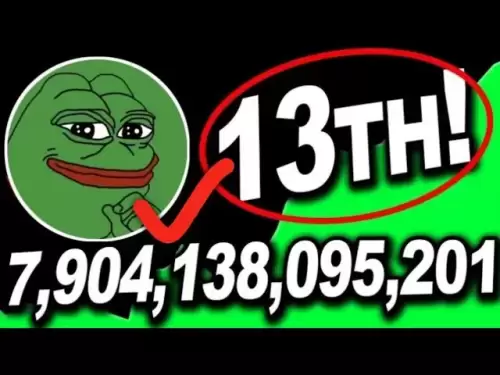-
 Bitcoin
Bitcoin $106,754.6083
1.33% -
 Ethereum
Ethereum $2,625.8249
3.80% -
 Tether USDt
Tether USDt $1.0001
-0.03% -
 XRP
XRP $2.1891
1.67% -
 BNB
BNB $654.5220
0.66% -
 Solana
Solana $156.9428
7.28% -
 USDC
USDC $0.9998
0.00% -
 Dogecoin
Dogecoin $0.1780
1.14% -
 TRON
TRON $0.2706
-0.16% -
 Cardano
Cardano $0.6470
2.77% -
 Hyperliquid
Hyperliquid $44.6467
10.24% -
 Sui
Sui $3.1128
3.86% -
 Bitcoin Cash
Bitcoin Cash $455.7646
3.00% -
 Chainlink
Chainlink $13.6858
4.08% -
 UNUS SED LEO
UNUS SED LEO $9.2682
0.21% -
 Avalanche
Avalanche $19.7433
3.79% -
 Stellar
Stellar $0.2616
1.64% -
 Toncoin
Toncoin $3.0222
2.19% -
 Shiba Inu
Shiba Inu $0.0...01220
1.49% -
 Hedera
Hedera $0.1580
2.75% -
 Litecoin
Litecoin $87.4964
2.29% -
 Polkadot
Polkadot $3.8958
3.05% -
 Ethena USDe
Ethena USDe $1.0000
-0.04% -
 Monero
Monero $317.2263
0.26% -
 Bitget Token
Bitget Token $4.5985
1.68% -
 Dai
Dai $0.9999
0.00% -
 Pepe
Pepe $0.0...01140
2.44% -
 Uniswap
Uniswap $7.6065
5.29% -
 Pi
Pi $0.6042
-2.00% -
 Aave
Aave $289.6343
6.02%
How to participate in DeFi mining on Binance?
Binance offers DeFi-like services (staking, liquidity provision, pools) for passive income, but it's crucial to understand the risks, including impermanent loss and smart contract vulnerabilities, before participating; thorough research is essential.
Mar 12, 2025 at 10:55 am
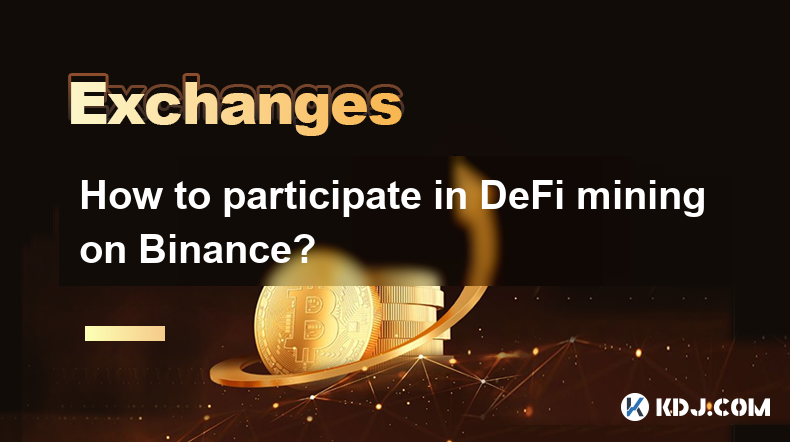
Key Points:
- Binance doesn't directly offer "DeFi mining" in the traditional sense of providing a platform to stake your own crypto and earn rewards.
- Binance offers various DeFi-related services that allow users to earn passive income, resembling the rewards of DeFi mining.
- These services include staking, liquidity provision, and participation in various Binance-launched pools.
- Understanding the risks involved, such as impermanent loss and smart contract vulnerabilities, is crucial before participating.
- Each service has its own set of requirements and risks, so thorough research is essential.
How to Participate in DeFi-like Activities on Binance
Binance, while not a decentralized finance (DeFi) protocol itself, offers numerous avenues for users to participate in activities that yield similar rewards to DeFi mining. It's important to understand that these aren't directly "DeFi mining" as you might find on a decentralized platform like Uniswap or Aave, but they provide comparable passive income opportunities.
1. Staking on Binance:
Binance offers a robust staking platform where users can lock up their crypto assets for a specified period to earn interest. The interest rates vary depending on the cryptocurrency and the staking period. This is a relatively low-risk option compared to other DeFi activities. You simply select your coin, choose a staking plan, and lock your assets. The rewards are then paid out regularly, typically daily or weekly.
- Choose the cryptocurrency you wish to stake from the available options on Binance.
- Select a staking plan with a duration and corresponding APY that suits your risk tolerance and investment goals.
- Lock your assets for the chosen period. You won't be able to access them until the staking period ends.
- Regularly check your Binance account to monitor your accumulated staking rewards.
2. Liquidity Provision on Binance:
Binance allows users to provide liquidity to its various trading pairs through its liquidity pools. This involves contributing an equal value of two different cryptocurrencies to a pool. In return, you earn trading fees proportional to your share of the pool. However, be aware of the risk of impermanent loss. This occurs if the price ratio of the two assets changes significantly during your participation.
- Select a trading pair on Binance that you are comfortable providing liquidity for. Consider the volatility of the assets.
- Deposit equal value of both assets into the selected liquidity pool.
- Your share of the trading fees generated by the pool will be distributed to you.
- Monitor the price movements of the assets to assess potential impermanent loss.
3. Binance Pool Participation:
Binance regularly launches various pools offering rewards for participation in activities like lending, providing liquidity, or staking specific tokens. These pools often offer attractive APYs but also carry higher risks. Always thoroughly research the specific terms and conditions before participating. The risk involved depends on the specific pool.
- Look for announcements on the Binance website or app regarding new pools.
- Carefully read the terms and conditions of each pool, paying close attention to the risks involved.
- Deposit the required assets into the chosen pool.
- Earn rewards based on the pool's specific rules and performance.
4. Binance Earn:
Binance Earn encompasses a range of products offering various ways to earn passive income, including flexible savings, locked savings, and staking. Each product has different risk levels and returns, allowing users to choose options that align with their preferences. Flexible savings allows for easy withdrawal, while locked savings offers higher returns for longer lock-up periods.
- Explore the different options available within Binance Earn.
- Select a product that aligns with your risk tolerance and investment timeline.
- Deposit your assets and earn rewards according to the product's terms.
- Regularly check your account to monitor your earnings.
Frequently Asked Questions:
Q: Is Binance DeFi mining truly decentralized?
A: No, Binance's DeFi-like services operate within its centralized exchange. While they offer similar earning potential to decentralized DeFi platforms, they lack the same level of decentralization and transparency.
Q: What are the risks involved in Binance's DeFi-like services?
A: Risks include impermanent loss (in liquidity pools), smart contract vulnerabilities (though less likely given Binance's security measures), and the risk associated with the volatility of cryptocurrencies themselves. There's also the counterparty risk inherent in using a centralized exchange.
Q: How do I withdraw my earnings from Binance's DeFi-like services?
A: The withdrawal process varies depending on the specific service. Generally, you can withdraw your earnings and principal after completing the required lock-up period or upon exiting a liquidity pool. Check the individual product's details for specific instructions.
Q: Are there fees associated with participating in Binance's DeFi-like services?
A: Yes, Binance typically charges fees for various services, including trading fees, withdrawal fees, and sometimes fees associated with participating in specific pools or staking programs. These fees are usually clearly outlined in the terms and conditions of each service.
Q: What is impermanent loss, and how can I avoid it?
A: Impermanent loss occurs when the price ratio of two assets in a liquidity pool changes significantly, resulting in a lower value of your assets compared to simply holding them. You can mitigate this risk by selecting less volatile asset pairs or by carefully monitoring price movements.
Disclaimer:info@kdj.com
The information provided is not trading advice. kdj.com does not assume any responsibility for any investments made based on the information provided in this article. Cryptocurrencies are highly volatile and it is highly recommended that you invest with caution after thorough research!
If you believe that the content used on this website infringes your copyright, please contact us immediately (info@kdj.com) and we will delete it promptly.
- 2025-W Uncirculated American Gold Eagle and Dr. Vera Rubin Quarter Mark New Products
- 2025-06-13 06:25:13
- Ruvi AI (RVU) Leverages Blockchain and Artificial Intelligence to Disrupt Marketing, Entertainment, and Finance
- 2025-06-13 07:05:12
- H100 Group AB Raises 101 Million SEK (Approximately $10.6 Million) to Bolster Bitcoin Reserves
- 2025-06-13 06:25:13
- Galaxy Digital CEO Mike Novogratz Says Bitcoin Will Replace Gold and Go to $1,000,000
- 2025-06-13 06:45:13
- Trust Wallet Token (TWT) Price Drops 5.7% as RWA Integration Plans Ignite Excitement
- 2025-06-13 06:45:13
- Ethereum (ETH) Is in the Second Phase of a Three-Stage Market Cycle
- 2025-06-13 07:25:13
Related knowledge
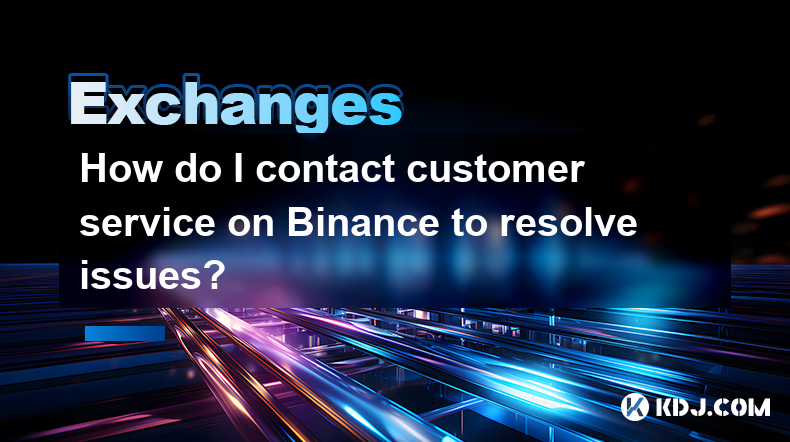
How do I contact customer service on Binance to resolve issues?
Mar 16,2025 at 04:30am
Key Points:Binance's customer service is primarily self-service, relying heavily on its help center and FAQs.Direct contact methods are limited, with email support being the most common route for non-urgent issues.Urgent issues may require using the in-app support system, though response times can vary.Understanding Binance's support structure and utili...
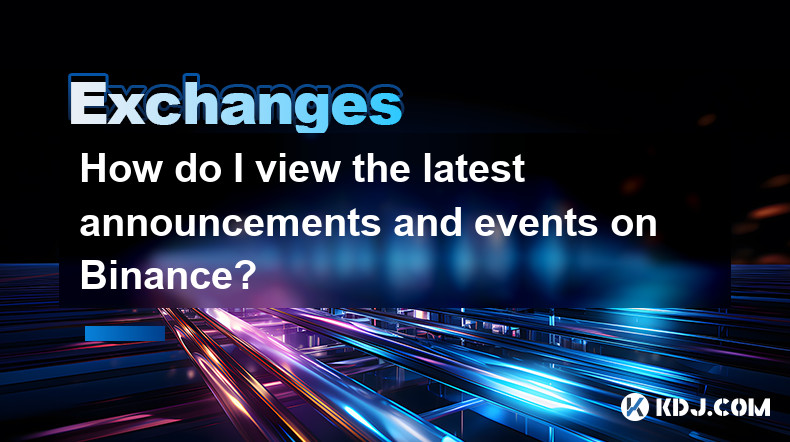
How do I view the latest announcements and events on Binance?
Mar 18,2025 at 10:18pm
Key Points:Binance utilizes multiple channels for disseminating announcements and events.The official Binance website is the primary source.Binance's social media platforms offer timely updates.Email subscriptions keep users informed about relevant announcements.Third-party aggregators can supplement official channels but require caution.How Do I View t...
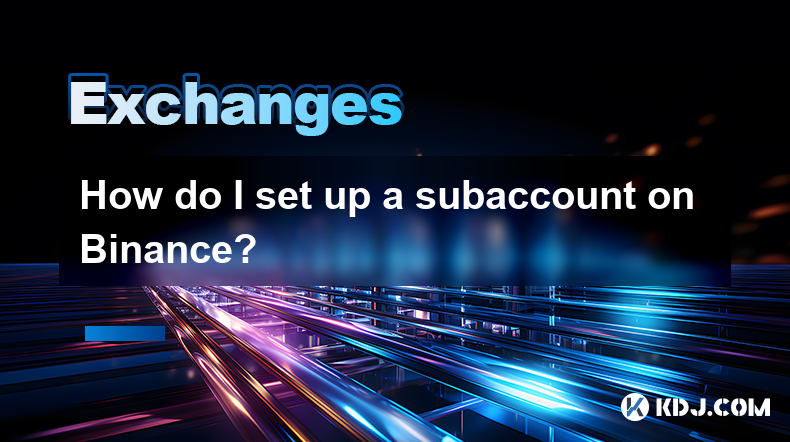
How do I set up a subaccount on Binance?
Mar 14,2025 at 01:50pm
Key Points:Binance does not offer traditional "subaccounts" in the sense of separate accounts with independent logins under a master account.Instead, Binance offers features like user-defined labels for better portfolio management and API keys for automated trading. These provide functionality similar to subaccounts.Setting up these features involves na...
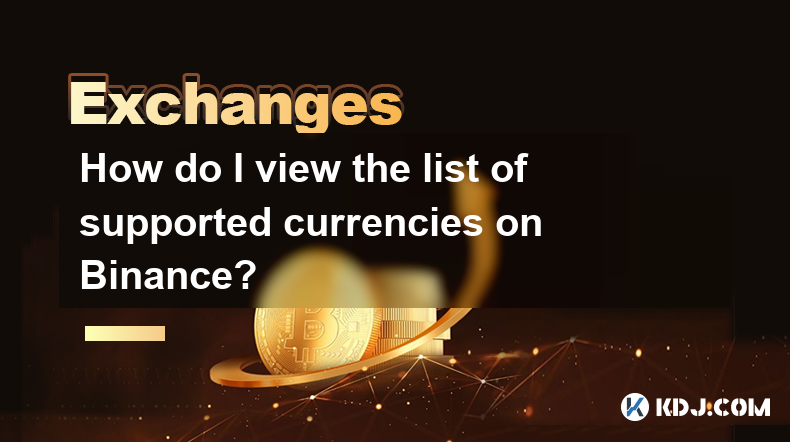
How do I view the list of supported currencies on Binance?
Mar 15,2025 at 05:35am
Key Points:Binance supports a vast and frequently updated list of cryptocurrencies. There's no single, static list.Finding supported currencies requires navigating Binance's website or app interfaces.Different sections of the exchange show different subsets of supported currencies (e.g., trading, staking, etc.).The availability of specific cryptocurrenc...
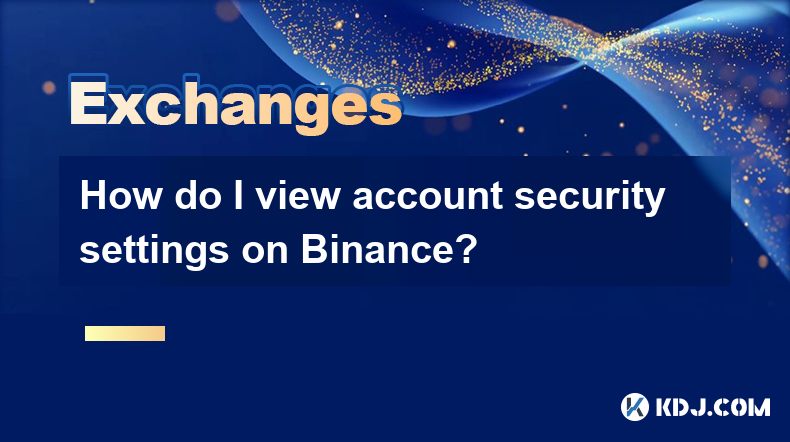
How do I view account security settings on Binance?
Mar 15,2025 at 08:40pm
Key Points:Binance's security settings are spread across multiple sections of your account. This article will guide you through each crucial area.Understanding and implementing these settings is paramount to protecting your cryptocurrency assets.We'll cover two-factor authentication (2FA), withdrawal whitelists, and other essential security features.Reg...
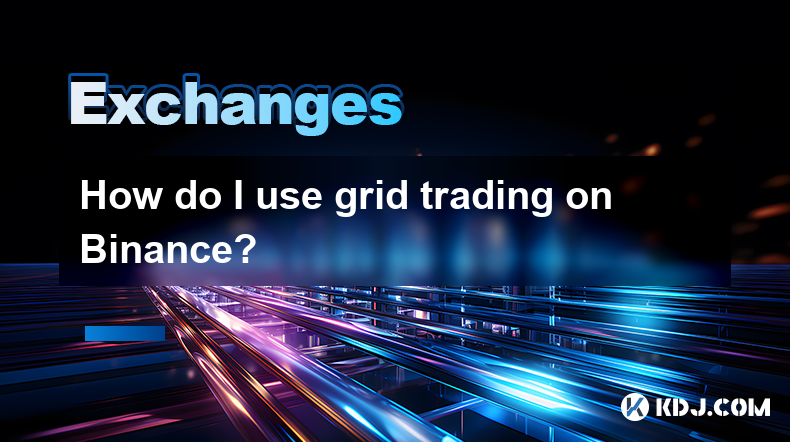
How do I use grid trading on Binance?
Mar 14,2025 at 04:25pm
Key Points:Grid trading on Binance involves automatically buying low and selling high within a defined price range.Binance offers a built-in grid trading bot, simplifying the process.Setting up a grid bot requires defining parameters like price range, grid quantity, and investment amount.Risk management is crucial, as losses are possible despite the aut...

How do I contact customer service on Binance to resolve issues?
Mar 16,2025 at 04:30am
Key Points:Binance's customer service is primarily self-service, relying heavily on its help center and FAQs.Direct contact methods are limited, with email support being the most common route for non-urgent issues.Urgent issues may require using the in-app support system, though response times can vary.Understanding Binance's support structure and utili...

How do I view the latest announcements and events on Binance?
Mar 18,2025 at 10:18pm
Key Points:Binance utilizes multiple channels for disseminating announcements and events.The official Binance website is the primary source.Binance's social media platforms offer timely updates.Email subscriptions keep users informed about relevant announcements.Third-party aggregators can supplement official channels but require caution.How Do I View t...

How do I set up a subaccount on Binance?
Mar 14,2025 at 01:50pm
Key Points:Binance does not offer traditional "subaccounts" in the sense of separate accounts with independent logins under a master account.Instead, Binance offers features like user-defined labels for better portfolio management and API keys for automated trading. These provide functionality similar to subaccounts.Setting up these features involves na...

How do I view the list of supported currencies on Binance?
Mar 15,2025 at 05:35am
Key Points:Binance supports a vast and frequently updated list of cryptocurrencies. There's no single, static list.Finding supported currencies requires navigating Binance's website or app interfaces.Different sections of the exchange show different subsets of supported currencies (e.g., trading, staking, etc.).The availability of specific cryptocurrenc...

How do I view account security settings on Binance?
Mar 15,2025 at 08:40pm
Key Points:Binance's security settings are spread across multiple sections of your account. This article will guide you through each crucial area.Understanding and implementing these settings is paramount to protecting your cryptocurrency assets.We'll cover two-factor authentication (2FA), withdrawal whitelists, and other essential security features.Reg...

How do I use grid trading on Binance?
Mar 14,2025 at 04:25pm
Key Points:Grid trading on Binance involves automatically buying low and selling high within a defined price range.Binance offers a built-in grid trading bot, simplifying the process.Setting up a grid bot requires defining parameters like price range, grid quantity, and investment amount.Risk management is crucial, as losses are possible despite the aut...
See all articles

























